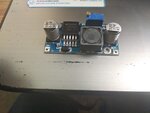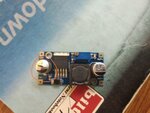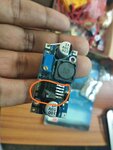Click00
Newbie level 2

I am powering my router from 24V battery. But power requirement of router is 12V/1A. So I am using LM2596 buck converter.
The specification for this buck converter is as follows:
Input voltage: 4-40V
Output voltage: 1.2-37V

Scenario 1:
It worked fine for a day. Next day when I connect a battery output to buck converter input, input capacitor started to burst(No output is connected). What might be the cause for this behaviour?

Scenario 2:
I bought another and tested it. The input which I provided is 24V and the output obtained is 12V. I connected the output to router. When I powered the router button on, voltage regulator emiited smoke and fired up.
What might be the cause for this behaviour?

What should I need to do to overcome this?
The specification for this buck converter is as follows:
Input voltage: 4-40V
Output voltage: 1.2-37V

Scenario 1:
It worked fine for a day. Next day when I connect a battery output to buck converter input, input capacitor started to burst(No output is connected). What might be the cause for this behaviour?

Scenario 2:
I bought another and tested it. The input which I provided is 24V and the output obtained is 12V. I connected the output to router. When I powered the router button on, voltage regulator emiited smoke and fired up.
What might be the cause for this behaviour?

What should I need to do to overcome this?




